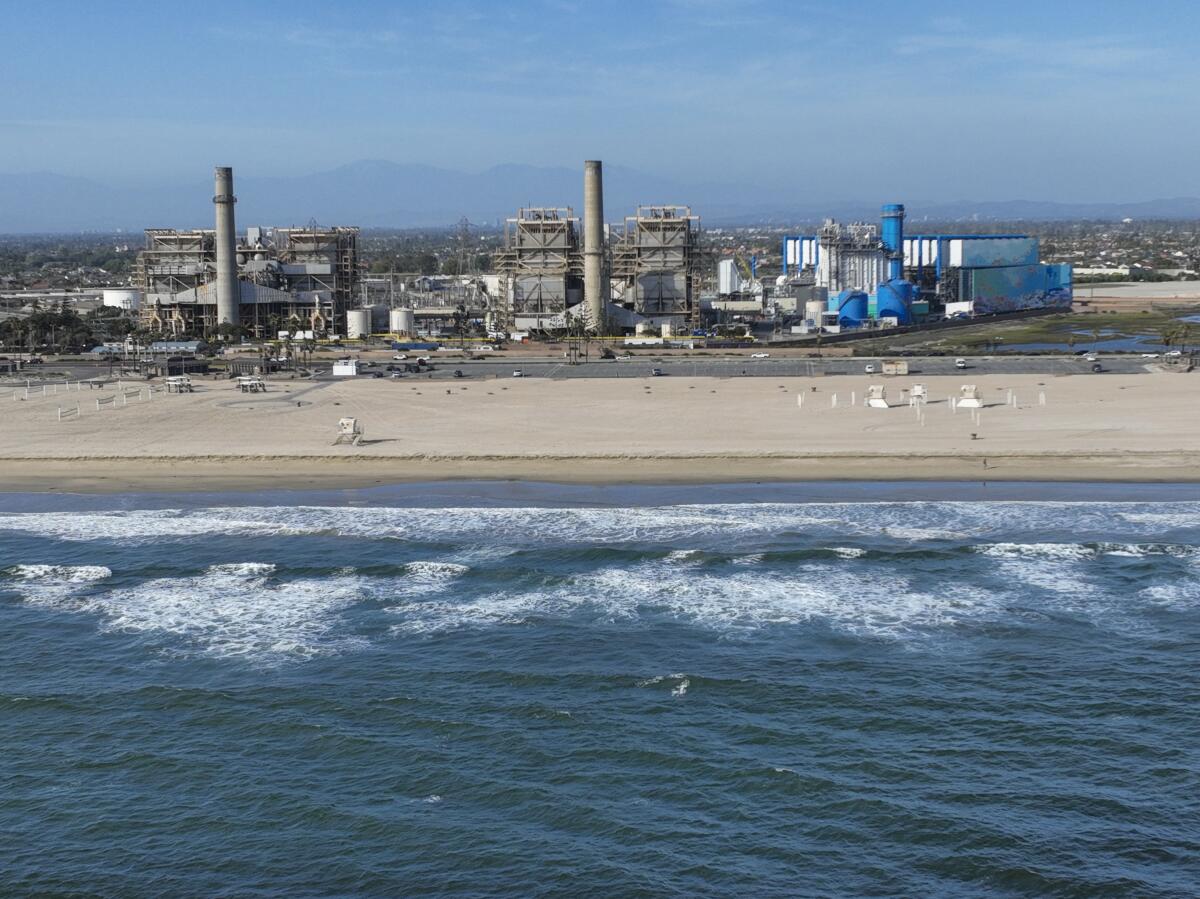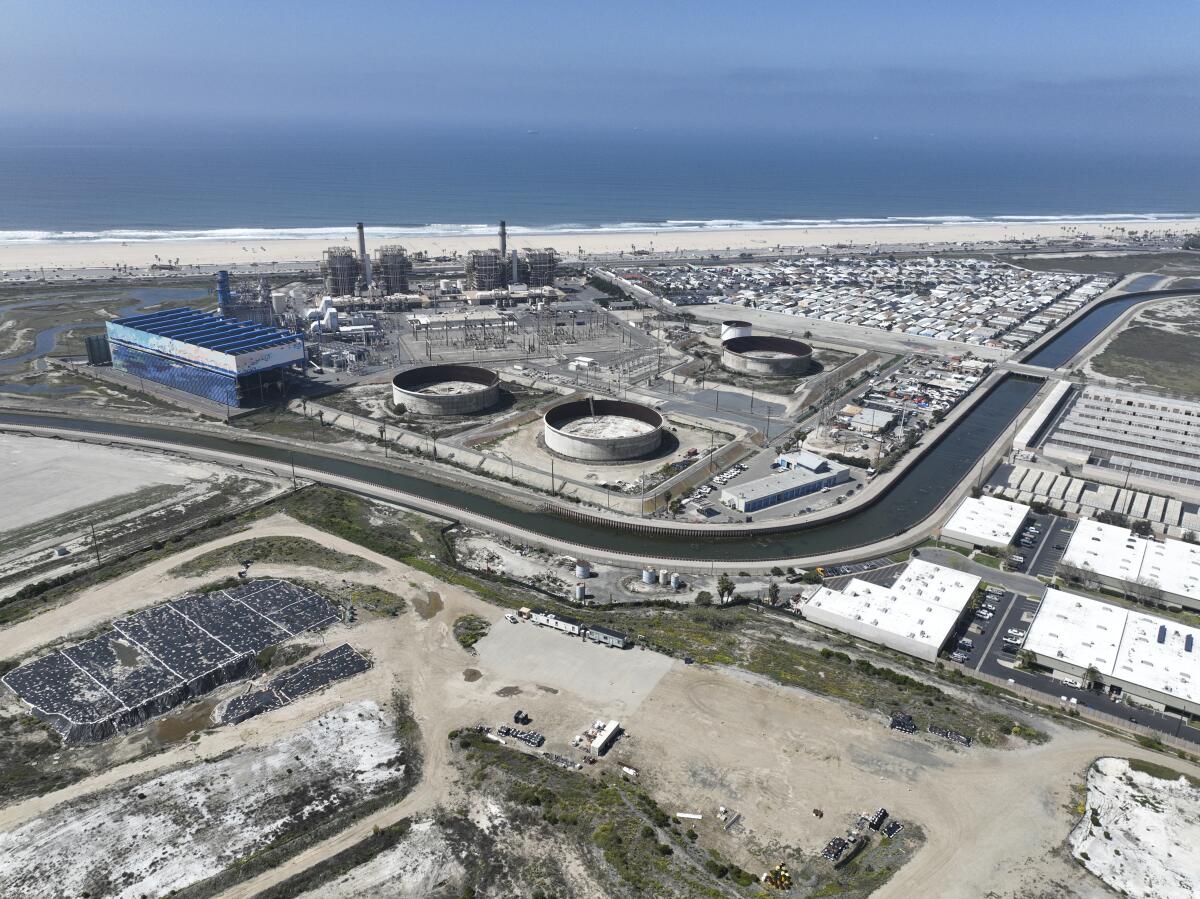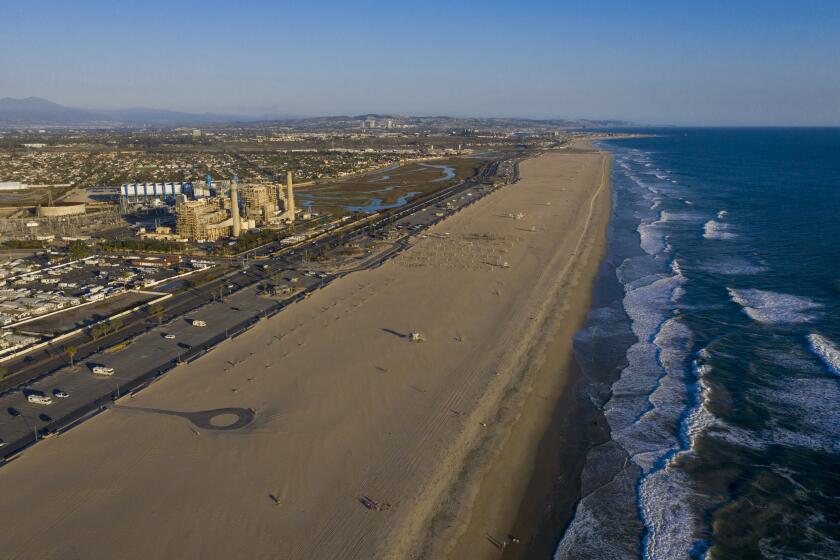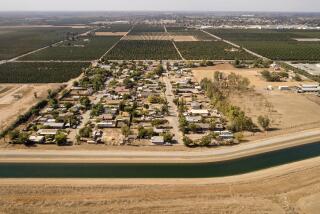Column: Five things Gov. Newsom got wrong in supporting Huntington Beach desalination plant

Gov. Gavin Newsom has weighed in again.
He supports the massive Huntington Beach desalination plant that comes up for a vote Thursday before the Coastal Commission.
I’ve weighed in, too.
It’s a really, really bad idea, as I explained in December.
Let’s start with what Newsom had to say about the controversial project, which has been on the drawing board for years.
“We need more tools in the damn toolkit,” Newsom told the Bay Area News Group editorial board in late April, doubling down on his earlier support. “We are as dumb as we want to be. What more evidence do you need that you need to have more tools in the toolkit than what we’ve experienced? Seven out of the last 10 years have been severe drought.”
The governor is not entirely wrong.
We do need more tools to fight drought, a catastrophic threat to the state that could soon force drastic cutbacks in water use.
And we are as dumb as we want to be.
So let me now lay out five reasons this is a dumb idea, for the benefit of the governor and coastal commissioners who will decide what is expected by insiders to be a tossup, despite a recommendation against the project by the Coastal Commission staff.
First: That part of Orange County does not need the water.
Many parts of the state are in dire condition when it comes to water supplies, but not this particular area. As reported by me and others, that part of Orange County has groundwater reserves that are expected to last decades, along with plenty of recycled water, thanks to substantial conservation efforts.
Surely, California can find something else other than a Canadian company asking for a handout to build a desalination plant.
Poseidon, the private company that is begging for massive public handouts to build the plant, is determined to pump 100 million gallons of water from the ocean each and every day, which might make sense if it had a customer. But no water agency has signed up to buy the water.
That’s not to say that desalination isn’t part of our future on this scorched planet. It’s in use all over the world, and California has 12 desalination plants in areas of the state where the water is needed. A smaller plant, proposed for the Doheny State Beach area, has widespread support and a water agency that actually needs the supply.

But desalination is expensive — which makes the water more costly than conventionally treated water, and that gets passed on to customers. If the idea is to transport desalinated Huntington Beach water to parts of the state that need it, that would make the water roughly the price of Champagne.
Second: There’s an environmental price to pay.
State scientists and environmental groups have warned of harmful effects on plankton, fish larvae and the broader marine ecosystem, thanks to massive amounts of intake and discharge (the treatment process creates a super-briny soup that would be pumped back into the ocean).
And you don’t run a plant this size on solar or wind power.
In my last column on the project, Andrea Leon-Grossman, of the marine conservation and environmental justice nonprofit Azul, noted that climate change and drought are directly related to greenhouse gas emissions. So it’s counterproductive to erect a massive plant that would burn more fossil fuel.
Poseidon officials claim that environmental fears are overblown, or that they’ll be mitigated. They’d have you believe the for-profit company, which is essentially privatizing a public resource while asking for taxpayer handouts, is doing us all a favor.
“The effects of climate change make seawater desalination a must in California,” Poseidon executive Scott Maloni told me.
Sure, if the location and engineering make sense. But even then, desalination should be a last resort.
“This particular project is in the wrong place to serve the needs we have today or in the future, given the lower cost feasible alternatives available, such as recycled water from our existing wastewater treatment plants,” says Ron Gastelum, former general manager of the Metropolitan Water District. “Recycled water is, throughout the state, a large untapped resource.”
It would make more sense, and produce far more water, to speed up and expand recycling and conservation efforts around the state.
Third: The political stink may cause hypertension and nosebleeds.
Poseidon, owned by a Canadian company with hundreds of billions of dollars in assets, has spent nearly $1 million lobbying on this project and applied for public loans and handouts totaling roughly $2 billion. In its last act of shameless panhandling, the company applied for $1.1 billion from a state bond fund intended largely to produce affordable housing.
But with friends in high places, why wouldn’t Poseidon go for gold? Surely you recall the foie gras faux pas when Newsom was caught dining at the French Laundry in wine country while telling us commoners to stay home during COVID-19. Let’s not forget why he was there. It was a birthday party for his buddy, a Poseidon lobbyist.
This is the same governor who disposed of William von Blasingame, a Santa Ana Regional Water Quality Control Board member who raised inconvenient questions about whether the desalination plant was needed and what it would ultimately cost ratepayers. Von Blasingame, after being dismissed, shared with me a solid piece of advice for Newsom:
“When you’re a governor, you sometimes have to say no to friends.”
Fourth: Environmental justice issues can’t be ignored.
The commission staff recommendation, which Newsom said he didn’t bother to read in detail, succinctly spells out the issue:
“The proposed project location is in an area with a concentration of industrial development and a history of contamination problems. Area residents are concerned about adding more industrial development to an area already dealing with existing harm from a nearby wastewater treatment plant, power plant, partially remediated Superfund site, former oil tank farm, and former dump.”
Then there’s a UCLA study that warned of likely “moderate to severe rate hikes” that would hit low-income households harder. Oscar Rodriguez, co-founder of a Huntington Beach neighborhood group called Oak View ComUNIDAD, told me it’s unsurprising. Public projects, he said, often harm low-income communities first and benefit them last.
“I grew up in this neighborhood … and we already have environmental issues,” Rodriguez said. “I think the governor needs to stand with the staff report and stand with our local communities. That’s what the Coastal Commission was created for — to make sure the coast has protection from industrialization.”
Fifth: A defining moment for the Coastal Commission.
Rodriguez is right. The 12 coastal commissioners, four of whom were appointed by Newsom, are on the spot to decide whom they serve and what their mission is. Some of the commissioners are running for public office, which raises the stakes, because that can mean a choice between doing the right thing and keeping donors happy.
Several years ago, the commission veered off course from its original mandate to provide coastal protection and enhancement, responsible development and access for all. Wealthy developers and homeowners hired powerful lobbyists to do their bidding. The lobbyists had connections all the way to the top of state government and cozy relationships with commissioners, some of whom were accused of breaking the rules on private conversations with developers and other parties, resulting in lawsuits and legislation.
Public scrutiny and good journalism were effective disinfectants, and today there’s a different set of commissioners at the helm.
We’ll find out a lot about them when they vote on desalination Thursday at 9 a.m.
(To watch the livestream, go to coastal.ca.gov).
More to Read
Sign up for Essential California
The most important California stories and recommendations in your inbox every morning.
You may occasionally receive promotional content from the Los Angeles Times.












